Natural fliers, such as bats, rely on anisotropic membranes within their wings for improved flight. By creating a material with similar anisotropic elastic characteristics, new design parameters are available to achieve desirable flight characteristics. This new membrane behavior is achieved through the development of a silicone matrix reinforced with unidirectional spandex fibers. The anisotropy index of the membrane is linked to its fiber ratio, providing researchers the opportunity to tailor wing-membrane elastic static and dynamic response. The ability to control elastic response with respect to direction allows opportunities for future work in the relationship between anisotropic membrane characteristics and resulting aerodynamic response.
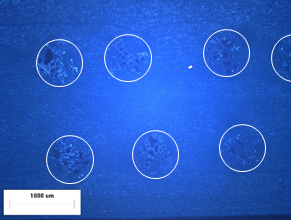

Fibers at 2.5X magnification denoted with white circles (left) and dry spandex fibers in the mold during membrane fabrication (right).
A method for improving artificial aerial vehicles toward the flight capabilities of natural filers by manufacturing and testing an artificial wing-membrane characterized by anisotropic properties and designed for Micro Air Vehicles (MAV) have been developed and tested. MAVs are remotely piloted or autonomous aircraft with a take-off mass in a range of 50 g. These vehicles, as well as natural fliers such as bats and insects, utilize a variety of elastic wing structures including thin membranes reinforced with bones or veins. Over 1,000 bat species worldwide utilize membranes for flight surfaces.
A practical manufacturing process was developed to produce membranes with the required elastic characteristics. Wet layup fiber composite and casting techniques, applied to the selected materials, resulted in a pliant composite membrane with unidirectional reinforcing fibers and global anisotropic elastic characteristics. The desired membrane’s anisotropic properties are achieved through specific material selection, elastic-fiber ratio and elastic-fiber pretension. The composites material includes Spandex-fiber as reinforcement and silicone as matrix.
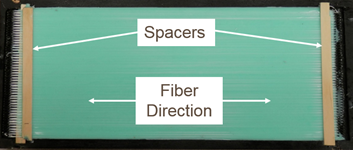
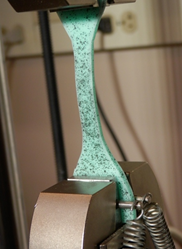
Anisotropic elastic composites membrane during fabrication (left); membrane’s sample under ASTM D412-06a tensile tests.
Theoretical models, validated with tensile tests, allow for general stiffness property estimation for a given formulation of the new composite membrane. Stress-strain curves for silicone and spandex reference samples as well as composite-membrane specimens tested parallel and transverse to the fibers showed promising results in the ability to tailor membrane anisotropy index with fiber ratio. Digital Image Correlation (DIC) is used in conjunction with static pressure test fixtures, tensile test machines, and the low-speed wind tunnel at Oregon State University to record full-field strain measurements of the membrane under various loading conditions.
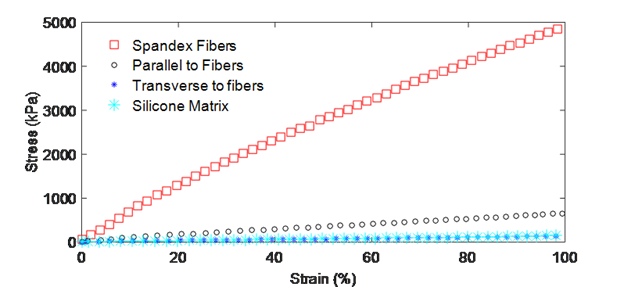
Sample of results from tensile tests of anisotropic elastic composites-membrane and reference materials components.
Static pressure tests have successfully demonstrated the desired correlation between membrane composition and elastic response to loading conditions. Membrane response to static pressure loading, in terms of membrane shape and local strains, is measured using DIC on a membrane mounted to the water hydrostatic pressure test fixture illustrated below.
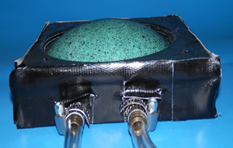
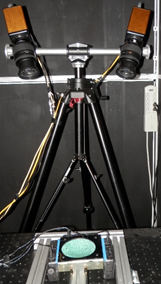
Membrane hydrostatic pressure tests: Membrane mounted on test rig (left) and test rig with DIC stereo-cameras viewing from top down (right).
After developing theoretical predictions for mechanical characteristics and experimental validation with membrane static-shape measurements, wind tunnel tests were planned for the estimation of wing aerodynamic performance. An anisotropic membrane was designed to deliver a shape that under dynamic pressure conditions will offer better aerodynamic characteristics in respect to an isotropic membrane wing.
The wind tunnel model set-up consisted of the elastic membrane bonded to a nominally rigid frame mounted to a 6 axis load cell for force and moment measurements. A socket on the model fits over the load cell and attaches to the upper and lower frame halves with a single reinforcement beam connecting the leading and trailing edges for structural stability. A silicone RTV adhesive bonds the two frame halves to the upper and lower faces of the membrane. The data acquisition and control system is capable of automatically running static and dynamic angle of attack (AOA) sweeps, as well as velocity sweeps during data collection.

Aerodynamic coefficient plots from wind tunnel results show different aerodynamic characteristics between the isotropic and composite membranes due to the their different in shape under dynamic pressure load. The anisotropic membrane, designed to exhibit higher dynamic stability to the membrane, thus increase membrane stiffness in the chord direction, showed lower lift and lower drag at the same AOA then the isotropic specimen.
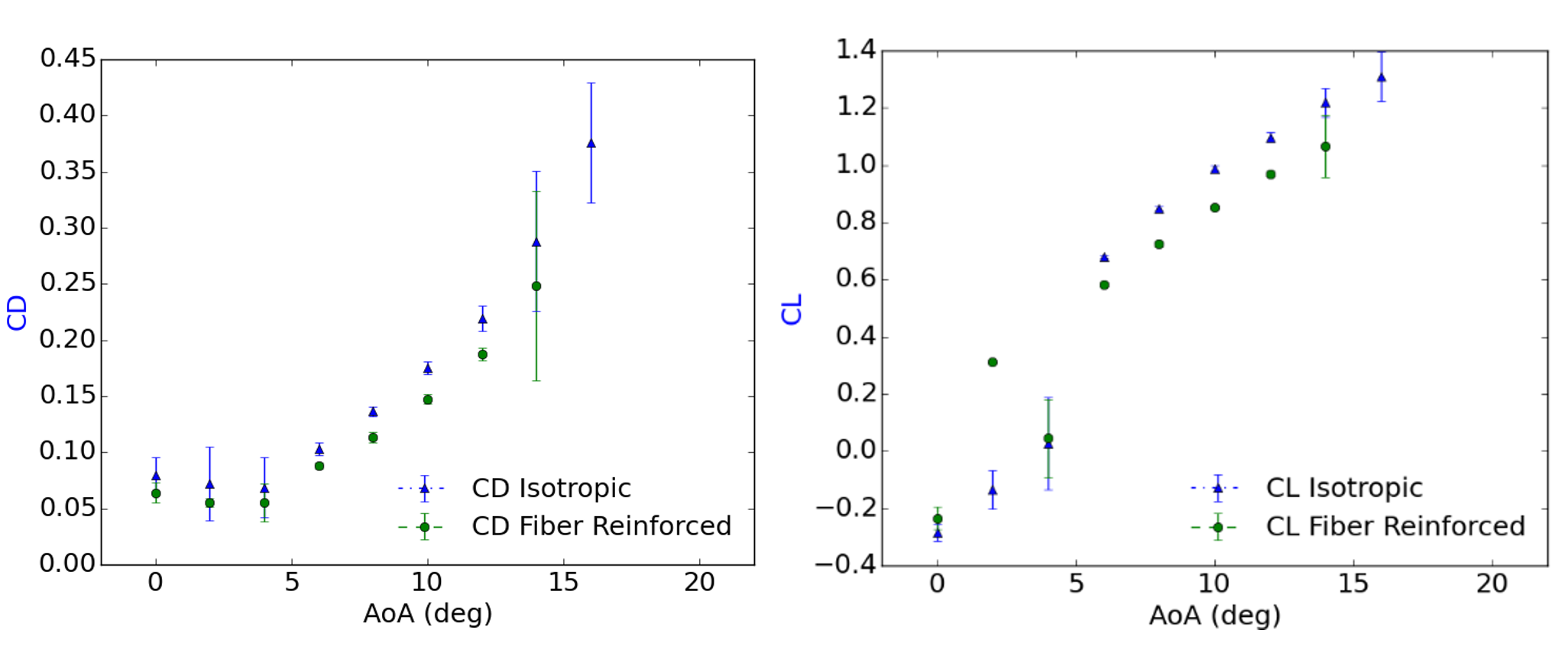
Full-field strain results from DIC analysis of the membranes in the wind tunnel showed different responses to aerodynamic loading between the isotropic and composite membranes. The two membranes also exhibited different shapes under same AOA and dynamic pressure. Further development of the manufacturing process for Spandex reinforced silicone membranes will provide useful results as a future MAV wing-membrane material.
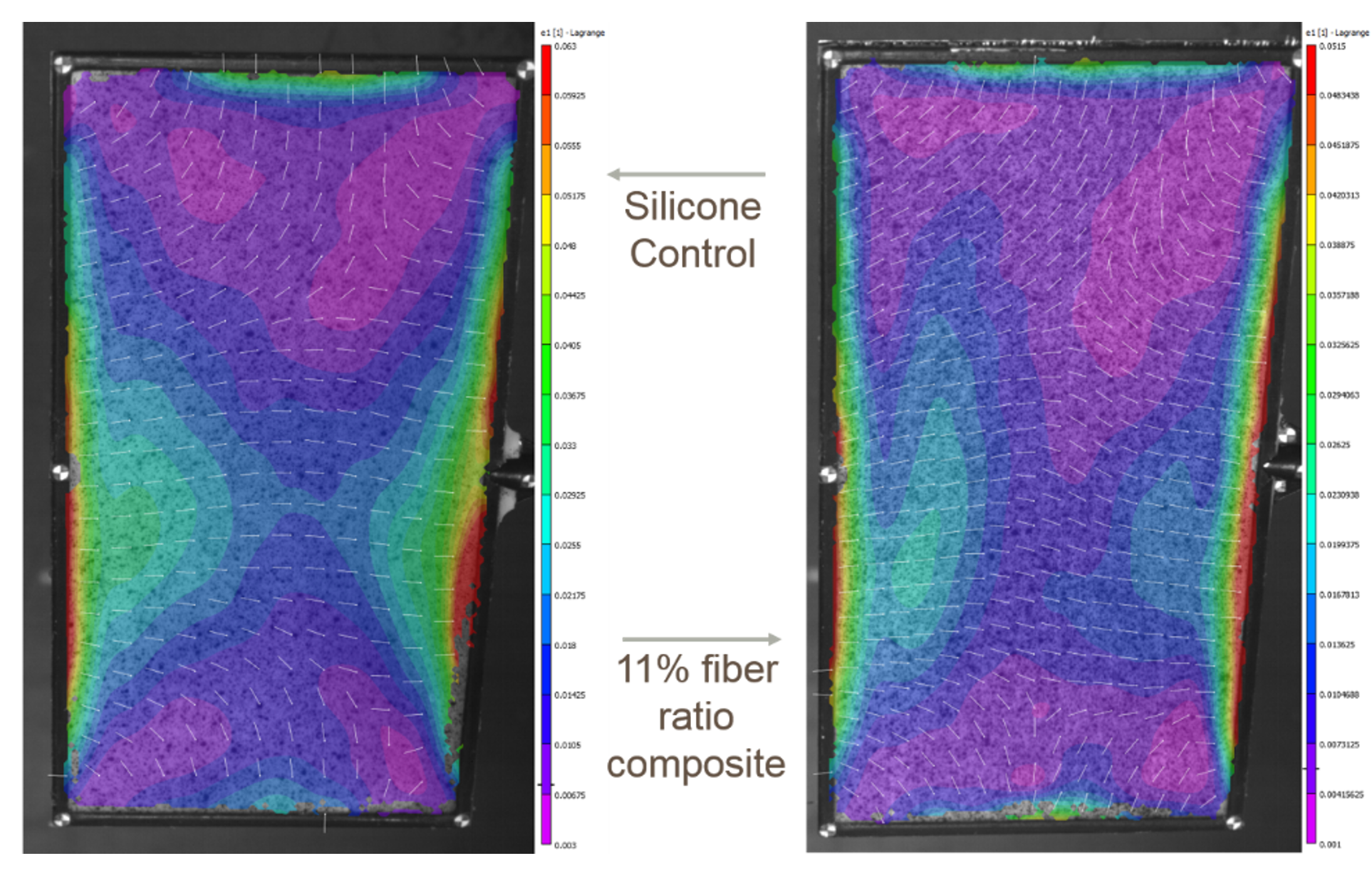
Publications and presentations
Wilcox, J., Osterberg, B., Albertani, R., Alioli, M., Morandini, M., Masarati, P., “Manufacturing and characterization of anisotropic membranes for Micro Air Vehicles,” SEM Annual Conference on Experimental and Applied Mechanics, Costa Mesa, California June 8-11, 2015.
Wilcox, J., “Development of a Non-Isotropic Membrane Wing Material,” Oregon State Engineering Research Expo 2015.
Acknowledgements
Air Force Office of Scientific Research, Air Force Material Command for project funding
Special thanks to research colleagues: Trenton Carpenter, Brent Osterberg, and Mattia Alioli (Politecnico di Milano, Italy)